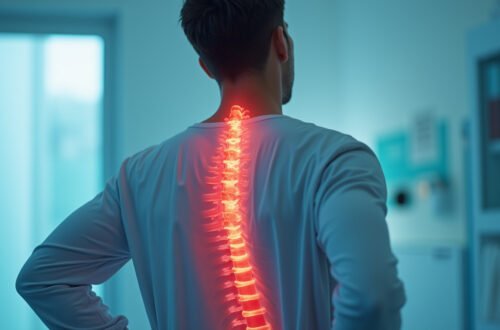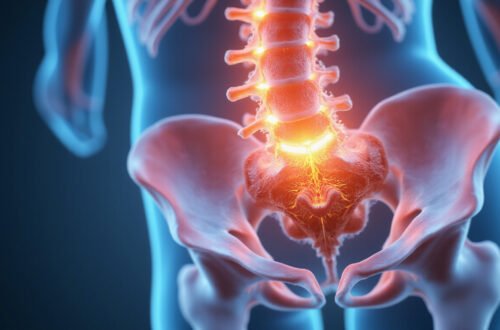Lumbar scoliosis is a condition that affects many individuals worldwide, yet it remains misunderstood by many. If you or a loved one suspect lumbar scoliosis, understanding its symptoms, causes, and available treatments is essential for seeking appropriate care. This comprehensive guide aims to provide clarity on this spinal condition, helping you navigate your options confidently.
What Is Lumbar Scoliosis?
Lumbar scoliosis refers to a sideways curvature of the spine that predominantly involves the lumbar region—the lower back area between the rib cage and pelvis. Unlike normal spinal alignment, which is straight when viewed from the back, lumbar scoliosis causes the spine to curve abnormally to the side. Although scoliosis can occur in any part of the spine, lumbar scoliosis specifically affects the lower back, often leading to unique symptoms and challenges.
Understanding lumbar scoliosis is crucial because it can impact posture, mobility, and even internal organ function in severe cases. Recognizing the symptoms early and exploring treatment options can improve quality of life significantly.
Symptoms of Lumbar Scoliosis
Identifying lumbar scoliosis involves noting specific signs and symptoms, which may vary depending on the severity of the curvature. Common symptoms include:
- Uneven Waist or Hips: One side may appear higher or more prominent than the other.
- Asymmetrical Legs or Feet: Differences in leg length or uneven footwear wear.
- Back Pain or Discomfort: Particularly in the lower back area, worsening with activity.
- Postural Changes: Leaning or tilting to one side when standing or walking.
- Visible Spinal Curvature: A noticeable "S" or "C" shape when viewed from behind.
- Fatigue in Back Muscles: Due to muscle compensation for spinal misalignment.
- In severe cases, nerve symptoms like numbness or tingling may occur if nerve roots are compressed.
If you observe any of these symptoms, it’s essential to consult a healthcare professional for assessment and diagnosis.
Causes of Lumbar Scoliosis
Lumbar scoliosis can develop from various causes, each influencing the approach to treatment. Understanding these causes helps in tailoring the most effective management plan.
1. Idiopathic Causes
Most cases of lumbar scoliosis are idiopathic, meaning the exact cause is unknown. This type commonly appears during adolescence and is more prevalent among girls.
2. Congenital Scoliosis
This form results from malformations of the vertebrae present at birth. It often progresses rapidly during growth spurts.
3. Degenerative Changes
In adults, lumbar scoliosis may arise from degenerative disc disease or osteoarthritis, causing the spine to lose its normal curvature and stability.
4. Neuromuscular Conditions
Conditions like cerebral palsy or muscular dystrophy can weaken spinal support structures, leading to scoliosis.
5. Trauma or Injury
Spinal injuries or fractures can alter vertebral alignment, causing sideward curvature over time.
Diagnosis of Lumbar Scoliosis
Diagnosis involves a physical examination and imaging tests:
- Physical Examination: Assessing posture, spinal symmetry, and range of motion.
- X-rays: Confirm the presence and degree of curvature; Cobb angle measurement is used to quantify scoliosis.
- MRI or CT Scans: In cases where nerve involvement or structural abnormalities are suspected.
Early diagnosis is vital, especially for adolescents, to prevent progression and complications.
Treatment Options for Lumbar Scoliosis
Treatment varies according to age, severity, and underlying cause. Options include conservative measures and surgical interventions.
1. Observation
For mild cases with minimal curvature (Cobb angle less than 20°) and no symptoms, regular monitoring may suffice.
2. Bracing
Bracing is often recommended for growing children and adolescents with moderate curves (20°–40°). It aims to prevent progression but does not reverse the existing curve. Common braces include:
- Boston Brace
- Milwaukee Brace
Wearing compliance is crucial for effectiveness.
3. Physical Therapy and Exercises
While exercises can’t correct severe curves, they can improve posture, muscle strength, and flexibility. Techniques include:
- Specific scoliosis exercises (e.g., Schroth method)
- Core strengthening routines
- Postural retraining
These are especially beneficial when combined with bracing or in mild cases.
4. Surgical Intervention
Surgery is considered for progressive curves exceeding 45–50°, or if neurological symptoms develop. Typical procedures include spinal fusion with instrumentation to straighten and stabilize the spine.
Benefits of surgery include:
- Pain relief
- Improved posture
- Prevention of further progression
Recovery involves a comprehensive rehabilitation plan to restore mobility and strength.
Lifestyle and Supportive Measures
Alongside formal treatments, lifestyle modifications can aid in managing lumbar scoliosis:
- Maintaining a healthy weight to reduce spinal stress.
- Engaging in low-impact activities like swimming or walking.
- Using ergonomic furniture to promote proper posture.
- Applying heat or cold therapy for pain relief.
Support groups and counseling can also help cope with the emotional and psychological impacts of scoliosis, especially during adolescence.
When to Seek Medical Attention
Prompt consultation is critical if you notice:
- Rapid worsening of curvature.
- Significant back pain or neurological symptoms.
- Loss of function or difficulty walking.
- Visible deformity or asymmetry.
Early intervention can prevent complications and improve outcomes dramatically.
Frequently Asked Questions About Lumbar Scoliosis
1. What are the early signs of lumbar scoliosis I should watch for?
Early signs include uneven shoulders or hips, leaning to one side, back pain, and asymmetry in waist or leg length differences.
2. Can lumbar scoliosis be cured without surgery?
While mild cases can often be managed with non-invasive treatments like bracing and physical therapy, severe or progressive scoliosis may require surgical correction.
3. Does lumbar scoliosis affect internal organs?
In severe cases, the spinal deformity can put pressure on other organs, potentially affecting lung and heart function. Regular monitoring is vital for comprehensive care.
Conclusion: Take Action Today for Better Spinal Health
Lumbar scoliosis, though common, is a manageable condition if diagnosed early and treated appropriately. Whether through observation, bracing, physical therapy, or surgery, addressing lumbar scoliosis proactively can significantly improve your quality of life. Don’t ignore persistent back discomfort, postural changes, or asymmetry—consult a healthcare professional for an accurate diagnosis and personalized treatment plan. Your spine’s health impacts your overall mobility and well-being; take the first step today toward a healthier, more balanced life.
For authoritative information and personalized advice, contact a healthcare provider or spine specialist. Remember, early intervention makes a world of difference.






